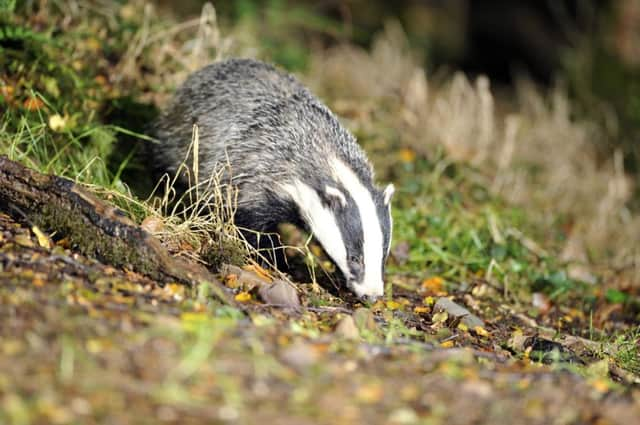Calls to extend culls after latest pilot hailed a success


This week’s findings of the second stage of the badger culls in Somerset - a known disease hotspot where, just as in Gloucestershire, pilot culls have taken place - show that there must be further roll out of culling to other areas where bTB is rife as soon as possible, the National Farmers’ Union (NFU) said.
The Government reacted to the findings itself by publishing a Biosecurity Action Plan which sets out plans to help farmers reduce the risk of disease spread on their farms.
Advertisement
Hide AdAdvertisement
Hide AdEnvironment Secretary Elizabeth Truss also announced that there will be a new service giving farmers within the badger cull areas bespoke veterinary advice on TB management.
She said: “During the last Parliament bovine TB rates in England soared to the highest in Europe. That is why we are taking strong action in pursuing our comprehensive strategy, including tighter cattle movement controls, vaccinations and culling.
“The Chief Vet’s advice is that results of this year’s cull in Somerset show they can be effective. That is why I am determined to continue with a comprehensive Strategy that includes culling.”
She said a consultation was planned on a package of tougher cattle measures in the New Year, including statutory post-movement testing for cattle entering the Low Risk Area - Yorkshire currently falls into this category.
Advertisement
Hide AdAdvertisement
Hide AdOther measures promised for next year include the launch of a web-based map showing locations of TB and publishing disease reports for the Edge and Low Risk Areas.
Mrs Truss added that her department had already awarded £50,000 in small grants to livestock markets to support measures which encourage cattle purchasers to give greater consideration to the TB risk of animals they are buying.
NFU President Meurig Raymond welcomed the news that this year’s results in Somerset show the culling can be carried out safely, humanely and effectively.
“We’ve been told by farmers in the Somerset cull zone that there has been a huge reduction in the number of herds under TB restriction since culling started in 2013, from 34 per cent to 11 per cent, he said. “We will wait for the scientific evidence to come in future years but, until that happens, for farmers in the area this is evidence that culling badgers is working and is helping them tackle this disease. There have also been reports of herds in the Gloucestershire cull area that had been down with bTB long-term that have gone clear since culling started.
Advertisement
Hide AdAdvertisement
Hide Ad“There are many other areas where bTB is rife and is having a massive impact on farming family businesses which would benefit from the roll out of culling badgers. Following the Chief Veterinary Officer’s advice that badger culling can work, we need the policy to be implemented in others areas next year.
The model of culling had to be looked at too, Mr Raymond said, to make it more difficult for operations to be illegally disrupted by protesters.